NEW

Overview of Direct Digital Synthesis (DDS) TechnologyDirect Digital Synthesis (DDS) is a powerful technique for generating precise waveforms digitally, including sine, square, triangular, and arbitrary waveforms. The CFR-12JB-52-110R is a notable DDS chip that showcases the capabilities of this technology. Below, we delve into the core functional technologies of DDS and explore various application development cases that highlight its effectiveness.
Core Functional Technologies of DDS1. Phase Accumulator2. Look-Up Table (LUT)3. Digital-to-Analog Converter (DAC)4. Low Pass Filter (LPF)5. Frequency Tuning6. Phase Modulation7. Programmability1. Signal Generators2. Communication Systems3. Software-Defined Radio (SDR)4. Function Generators5. Medical Imaging6. Aerospace and Defense7. Audio Applications8. Industrial Automation Application Development Cases ConclusionDirect Digital Synthesis (DDS) technology, exemplified by devices like the CFR-12JB-52-110R, is integral to various fields, from telecommunications to medical imaging. Its core functionalities, including phase accumulation, look-up tables, and programmability, enable the generation of high-quality, precise waveforms for a diverse array of applications. As technology continues to advance, the applications of DDS are expected to expand further, solidifying its role as a vital component in modern electronic systems.

Certainly! Here’s a more detailed exploration of microcontrollers, microprocessors, and FPGA modules, focusing on their core functional technologies and application development cases.
MicrocontrollersArchitecture: Microcontrollers (MCUs) typically consist of a CPU, memory (both volatile and non-volatile), and various peripherals integrated into a single chip. Common architectures include ARM Cortex, AVR, and PIC.Architecture: Microcontrollers (MCUs) typically consist of a CPU, memory (both volatile and non-volatile), and various peripherals integrated into a single chip. Common architectures include ARM Cortex, AVR, and PIC.Programming: They are often programmed using high-level languages like C/C++ or assembly. Development environments such as Arduino IDE, MPLAB X, and Keil MDK are popular for MCU programming.Programming: They are often programmed using high-level languages like C/C++ or assembly. Development environments such as Arduino IDE, MPLAB X, and Keil MDK are popular for MCU programming.Power Efficiency: Designed for low power consumption, they often include sleep modes and low-power operation features, making them ideal for battery-operated devices.Power Efficiency: Designed for low power consumption, they often include sleep modes and low-power operation features, making them ideal for battery-operated devices.Architecture: Microprocessors (MPUs) are designed for high-performance tasks and typically feature a more complex architecture with separate components for CPU, memory, and I/O interfaces. Common architectures include x86 and ARM.Architecture: Microprocessors (MPUs) are designed for high-performance tasks and typically feature a more complex architecture with separate components for CPU, memory, and I/O interfaces. Common architectures include x86 and ARM.Operating Systems: They can run full-fledged operating systems (OS) like Linux, Windows, or Android, enabling multitasking and complex application execution.Operating Systems: They can run full-fledged operating systems (OS) like Linux, Windows, or Android, enabling multitasking and complex application execution.Performance: MPUs generally have higher clock speeds, multiple cores, and advanced features like out-of-order execution, making them suitable for demanding applications.Performance: MPUs generally have higher clock speeds, multiple cores, and advanced features like out-of-order execution, making them suitable for demanding applications.Reconfigurability: FPGAs (Field-Programmable Gate Arrays) can be programmed and reprogrammed to perform specific tasks, allowing for hardware-level customization. This flexibility is crucial for prototyping and specialized applications.Reconfigurability: FPGAs (Field-Programmable Gate Arrays) can be programmed and reprogrammed to perform specific tasks, allowing for hardware-level customization. This flexibility is crucial for prototyping and specialized applications.Parallel Processing: FPGAs can execute multiple operations simultaneously, making them ideal for high-speed applications such as digital signal processing (DSP).Parallel Processing: FPGAs can execute multiple operations simultaneously, making them ideal for high-speed applications such as digital signal processing (DSP).Development Tools: Programming is done using hardware description languages (HDLs) like VHDL or Verilog, with development environments such as Xilinx Vivado and Intel Quartus.Development Tools: Programming is done using hardware description languages (HDLs) like VHDL or Verilog, with development environments such as Xilinx Vivado and Intel Quartus.Microcontrollers are ideal for low-power, cost-sensitive applications where integration and simplicity are key.Microcontrollers are ideal for low-power, cost-sensitive applications where integration and simplicity are key.Microprocessors excel in high-performance environments requiring complex computations and multitasking capabilities.Microprocessors excel in high-performance environments requiring complex computations and multitasking capabilities.FPGAs offer unparalleled flexibility and performance for specialized tasks, particularly in applications requiring parallel processing and rapid prototyping.FPGAs offer unparalleled flexibility and performance for specialized tasks, particularly in applications requiring parallel processing and rapid prototyping.1. Home Automation: Microcontrollers like the ESP8266 or ESP32 are widely used in smart home devices for controlling lights, thermostats, and security systems via Wi-Fi.2. Wearable Devices: MCUs are integral in fitness trackers and smartwatches, where they monitor health metrics like heart rate and activity levels while maintaining low power consumption.3. Industrial Automation: In PLCs, microcontrollers control machinery, monitor sensors, and manage processes in manufacturing environments, enhancing efficiency and safety.1. Embedded Systems: Microprocessors are used in devices like smart TVs, gaming consoles, and set-top boxes, where they handle multimedia processing and user interfaces.2. Automotive Applications: In advanced driver-assistance systems (ADAS), microprocessors process data from various sensors (cameras, LIDAR) in real-time to enhance vehicle safety and navigation.3. Networking Equipment: Found in routers and switches, microprocessors manage data traffic, perform routing functions, and support network protocols for efficient communication.1. Signal Processing: FPGAs are extensively used in telecommunications for real-time signal processing, such as in 5G networks, where they handle high data rates and complex modulation schemes.2. Image Processing: In medical imaging and surveillance systems, FPGAs perform real-time image enhancement, object detection, and video encoding/decoding.3. Cryptography: FPGAs are employed in secure communications to implement encryption algorithms efficiently, providing high-speed data encryption and decryption. Microprocessors FPGA Modules ConclusionMicrocontrollers, microprocessors, and FPGA modules each play vital roles in modern electronics, catering to different needs based on their unique capabilities. When developing applications, it’s essential to assess the specific requirements, including processing power, power consumption, and the need for flexibility or reconfigurability, to select the most suitable technology. This understanding enables developers to create innovative solutions across various industries, from consumer electronics to industrial automation and telecommunications.

Overview of Programmable Logic Devices (PLDs)Definition: Programmable Logic Devices (PLDs) are integrated circuits that can be programmed to perform specific logic functions. They are essential in implementing digital logic designs and can be reconfigured to adapt to various applications, making them highly versatile in electronic design.
Core Functional Technologies1. Types of PLDs2. Programming Technologies3. Development Tools Application Development Cases1. Consumer Electronics: PLDs are extensively used in devices like televisions, gaming consoles, and smartphones for tasks such as signal processing, user interface control, and data management. Their programmability allows manufacturers to quickly adapt to changing market demands. 2. Automotive Applications: In automotive systems, PLDs are utilized for functions like engine control units (ECUs), safety systems, and infotainment systems. Their ability to be reprogrammed enables rapid prototyping and updates, which is crucial in the fast-evolving automotive industry.
3. Telecommunications: PLDs play a vital role in networking equipment for packet processing, protocol handling, and signal routing. Their flexibility allows for high-speed data transmission and adaptability in network design, essential for modern communication systems.
4. Industrial Automation: In control systems for manufacturing processes, robotics, and automation equipment, PLDs provide customizable solutions tailored to specific industrial needs. Their reconfigurability allows for quick adjustments to production lines.
5. Aerospace and Defense: PLDs are employed in avionics, radar systems, and military communication systems, where reliability and the ability to update designs are critical. Their robustness and adaptability make them suitable for mission-critical applications.
6. Medical Devices: In medical imaging and diagnostic equipment, PLDs enable complex signal processing and data handling, allowing for real-time analysis and improved patient outcomes. Their programmability supports the development of innovative medical technologies.
ConclusionProgrammable Logic Devices (PLDs) are versatile components that play a crucial role in modern electronics. Their ability to be programmed and reconfigured makes them ideal for a wide range of applications across various industries. As technology continues to evolve, PLDs will remain a key element in the development of innovative electronic solutions, driving advancements in consumer electronics, automotive systems, telecommunications, industrial automation, aerospace, defense, and medical devices.

Overview of Digital Potentiometers: The 1N5244B-TDigital potentiometers, such as the 1N5244B-T, are integral components in contemporary electronic designs, providing precise resistance control in a variety of applications. Their digital nature allows for enhanced functionality compared to traditional analog potentiometers, making them essential in modern circuit design.
Core Functional Technologies1. Digital Control 2. Non-Volatile Memory 3. Multi-Channel Operation 4. Programmable Resistance 5. High Precision and Stability 1. Audio Equipment 2. Sensor Calibration 3. Automotive Applications 4. Industrial Automation 5. Medical Devices 6. Consumer Electronics Application Development Cases ConclusionDigital potentiometers like the 1N5244B-T are pivotal in modern electronics, offering precise control, programmability, and reliability across a wide range of applications. Their integration into audio equipment, automotive systems, industrial automation, and medical devices highlights their versatility and effectiveness in improving performance and user experience. As technology continues to advance, the role of digital potentiometers is expected to expand, driving innovation across various fields and applications.
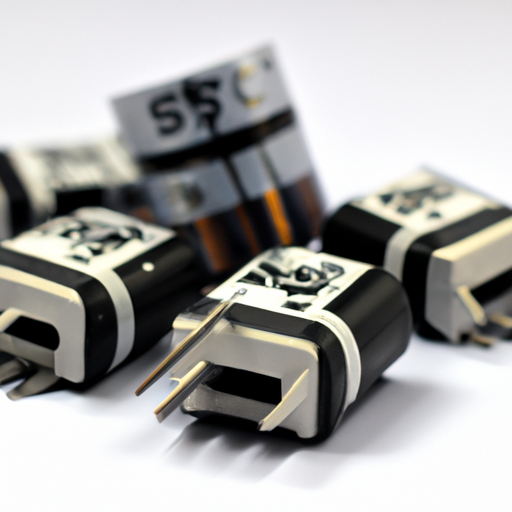
Overview of MultivibratorsMultivibrators are fundamental building blocks in electronics, widely used for generating waveforms, timing applications, and signal processing. They can be categorized into three primary types: astable, monostable, and bistable multivibrators. Each type serves distinct functions and applications, making them essential in various electronic designs.
Core Functional Technologies of Multivibrators1. Astable Multivibrator2. Monostable Multivibrator3. Bistable Multivibrator1. Astable Multivibrator in LED Flasher Circuits2. Monostable Multivibrator for Timer Applications3. Bistable Multivibrator in Digital Logic Circuits4. Astable Multivibrator for Frequency Generation5. Monostable Multivibrator in Pulse Width Modulation (PWM) Application Development Cases ConclusionMultivibrators are versatile and essential components in electronic design, with applications ranging from simple LED flashers to complex digital circuits. Their ability to generate precise timing signals and control states makes them invaluable in various fields, including consumer electronics, automotive systems, and industrial automation. Understanding the core functionalities and practical applications of multivibrators empowers engineers and designers to innovate and create effective solutions across diverse industries.
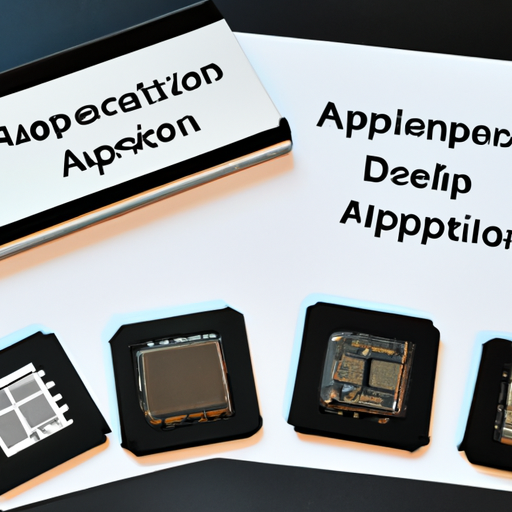
Application Development in Drivers, Receivers, and Transceivers for 1N5237B-T: Key Technologies and Success StoriesThe 1N5237B-T is a Zener diode widely utilized in electronic applications for voltage regulation and protection. Its characteristics make it particularly suitable for use in drivers, receivers, and transceivers. Below, we explore the key technologies associated with the 1N5237B-T and highlight notable success stories across various industries.
Key Technologies1. Voltage Regulation2. Signal Conditioning3. Transient Voltage Suppression (TVS)4. Low-Noise Operation5. Temperature Stability1. Telecommunications2. Consumer Electronics3. Automotive Applications4. Industrial Automation5. Medical Devices Success Stories ConclusionThe 1N5237B-T Zener diode is a critical component in the development of drivers, receivers, and transceivers across various industries. Its ability to provide stable voltage regulation, protect against transients, and operate reliably in diverse conditions makes it invaluable in modern electronic designs. As technology continues to advance, the integration of components like the 1N5237B-T will remain essential for the evolution of communication, automotive, industrial, and medical applications, driving innovation and improving performance across the board.
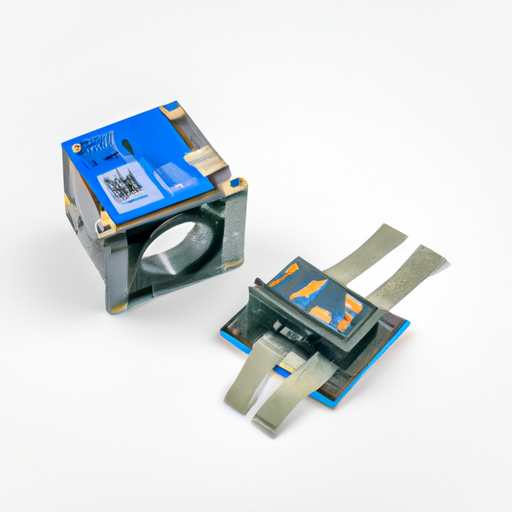
Certainly! Here’s a more detailed exploration of encoders, decoders, and converters, focusing on their core functional technologies and application development cases.
Encoders1. Rotary Encoders These devices measure the rotation of a shaft and output a corresponding electrical signal. They can be incremental (providing relative position) or absolute (providing a unique position value).2. Linear Encoders These measure linear displacement and are often used in applications requiring precise position tracking.1. Binary Decoders These take binary input and activate one specific output line corresponding to the binary value.2. Demodulators These devices decode signals that have been modulated for transmission, restoring them to their original form.1. Analog-to-Digital Converters (ADC) These convert continuous analog signals into discrete digital values, enabling digital processing.2. Digital-to-Analog Converters (DAC) These convert digital data back into analog signals, allowing for output in formats like audio or video.Robotics: In robotic systems, rotary encoders are used to provide feedback on joint angles, enabling precise control of movement. For instance, a robotic arm equipped with encoders can perform tasks like assembly or painting with high accuracy.Robotics: In robotic systems, rotary encoders are used to provide feedback on joint angles, enabling precise control of movement. For instance, a robotic arm equipped with encoders can perform tasks like assembly or painting with high accuracy.CNC Machines: Linear encoders are essential in CNC (Computer Numerical Control) machines, where they ensure that the cutting tool moves to the correct position, enhancing the precision of machining operations.CNC Machines: Linear encoders are essential in CNC (Computer Numerical Control) machines, where they ensure that the cutting tool moves to the correct position, enhancing the precision of machining operations.Television and Radio: In broadcasting, decoders are used to demodulate signals received from antennas, allowing viewers to access various channels and content.Television and Radio: In broadcasting, decoders are used to demodulate signals received from antennas, allowing viewers to access various channels and content.Memory Access: In digital circuits, decoders are used to select memory locations based on binary addresses, facilitating data retrieval in microcontrollers and processors.Memory Access: In digital circuits, decoders are used to select memory locations based on binary addresses, facilitating data retrieval in microcontrollers and processors.Medical Devices: In medical imaging, ADCs are used to convert analog signals from sensors into digital data for processing and analysis, such as in ultrasound machines.Medical Devices: In medical imaging, ADCs are used to convert analog signals from sensors into digital data for processing and analysis, such as in ultrasound machines.Consumer Electronics: DACs are widely used in audio devices, where they convert digital audio files into analog signals for playback through speakers or headphones, ensuring high-quality sound reproduction.Consumer Electronics: DACs are widely used in audio devices, where they convert digital audio files into analog signals for playback through speakers or headphones, ensuring high-quality sound reproduction.Case Studies: Look for specific implementations of these technologies in real-world applications, such as autonomous vehicles or smart home devices.Case Studies: Look for specific implementations of these technologies in real-world applications, such as autonomous vehicles or smart home devices.Technical Articles: Research papers and articles that discuss advancements in encoder, decoder, and converter technologies, including emerging trends like machine learning integration or IoT applications.Technical Articles: Research papers and articles that discuss advancements in encoder, decoder, and converter technologies, including emerging trends like machine learning integration or IoT applications.Hands-On Projects: Engage in DIY projects that utilize these components, such as building a simple robotic arm with encoders or creating a digital audio player with DACs.Hands-On Projects: Engage in DIY projects that utilize these components, such as building a simple robotic arm with encoders or creating a digital audio player with DACs. Decoders Converters ConclusionEncoders, decoders, and converters are foundational components in modern electronics, facilitating the conversion and processing of data across various applications. Their roles are critical in industries such as robotics, telecommunications, audio processing, and industrial automation. Further ExplorationBy understanding the core technologies and their applications, engineers and developers can innovate and create more efficient systems that leverage these essential components.
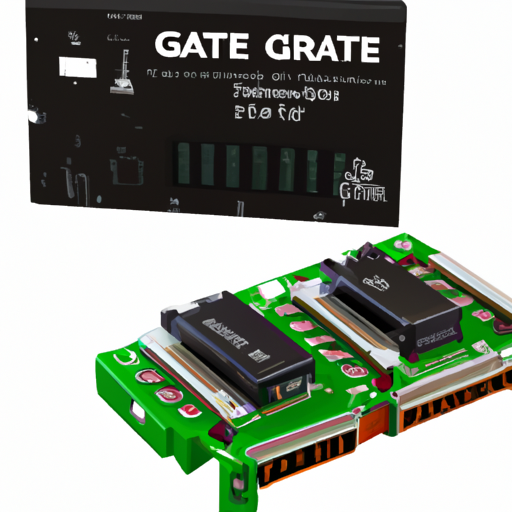
Overview of Gates and InvertersGates and inverters are fundamental components in digital electronics, serving as the building blocks for more complex circuits. They perform logical operations on binary inputs, which are essential for processing and controlling digital signals.
Core Functional Technology of Gates and Inverters 1. Logic Gates
Logic gates perform basic logical functions and are categorized based on their operation:AND Gate: Outputs true (1) only if all inputs are true.AND Gate: Outputs true (1) only if all inputs are true.OR Gate: Outputs true if at least one input is true.OR Gate: Outputs true if at least one input is true.NOT Gate (Inverter): Outputs the opposite of the input.NOT Gate (Inverter): Outputs the opposite of the input.NAND Gate: Outputs false only if all inputs are true (NOT AND).NAND Gate: Outputs false only if all inputs are true (NOT AND).NOR Gate: Outputs true only if all inputs are false (NOT OR).NOR Gate: Outputs true only if all inputs are false (NOT OR).XOR Gate: Outputs true if an odd number of inputs are true.XOR Gate: Outputs true if an odd number of inputs are true.XNOR Gate: Outputs true if an even number of inputs are true.XNOR Gate: Outputs true if an even number of inputs are true. 2. Inverters
An inverter, or NOT gate, is a specific type of logic gate that inverts the input signal. It is crucial for signal conditioning, logic level conversion, and creating complementary signals in digital circuits. Application Development Cases 1. Digital Signal Processing (DSP)
Inverters and logic gates are integral to DSP applications, enabling the manipulation of binary signals for tasks such as audio and image processing. For example, they can be used to design filters that enhance signal quality or modulate signals for transmission. 2. Microcontroller and Microprocessor Design
Gates and inverters are essential in the architecture of microcontrollers and microprocessors. They form the basis of the arithmetic logic unit (ALU) and control units, allowing for arithmetic operations and control of peripheral devices. For instance, a microcontroller may utilize AND, OR, and NOT gates to execute instructions and manage input/output operations. 3. FPGA and ASIC Design
Field Programmable Gate Arrays (FPGAs) and Application-Specific Integrated Circuits (ASICs) leverage gates and inverters to create custom logic circuits. These components enable designers to implement specific functionalities for applications like image processing, machine learning, and cryptography, allowing for high performance and efficiency. 4. Power Management Circuits
Inverters play a critical role in power management circuits, such as DC-DC converters and voltage regulators. They help control power flow and ensure devices receive appropriate voltage levels. For example, in a buck converter, inverters switch the input voltage to achieve a desired lower output voltage, optimizing power efficiency. 5. Communication Systems
In digital communication systems, gates and inverters are used in encoding and decoding processes. They are vital for implementing error detection and correction algorithms, which maintain data integrity during transmission. For instance, a communication system may use XOR gates to detect errors in transmitted data. 6. Robotics and Automation
In robotics, gates and inverters are utilized in control systems to process sensor inputs and make decisions based on logical conditions. For example, a robot may employ a combination of AND and OR gates to determine its movement based on environmental sensor data, enabling autonomous navigation. ConclusionGates and inverters are indispensable components in modern electronics, facilitating a wide array of applications from simple logic circuits to complex digital systems. Their versatility and fundamental nature make them critical in various fields, including computing, telecommunications, and automation. A thorough understanding of their core functionalities and applications can lead to innovative designs and solutions in technology development.
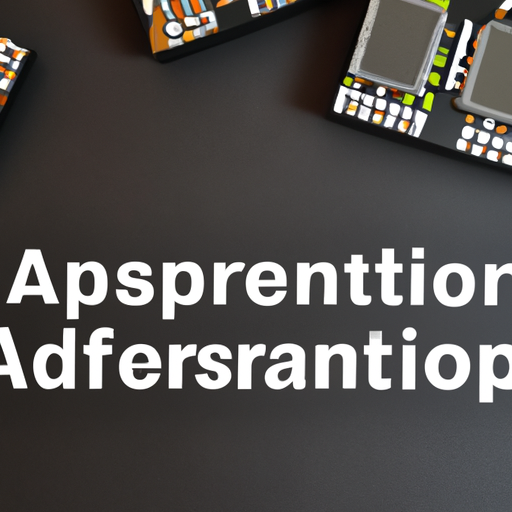
Application Development in Buffers, Drivers, Receivers, and Transceivers for 1N5231B-T: Key Technologies and Success StoriesThe 1N5231B-T Zener diode is a versatile component widely utilized in electronic circuits for voltage regulation. Its application in conjunction with buffers, drivers, receivers, and transceivers highlights its importance in various technological domains. Below, we delve into the key technologies and notable success stories that showcase the effective use of the 1N5231B-T.
Key Technologies1. Voltage Regulation2. Signal Conditioning3. Analog-to-Digital Conversion (ADC)4. Communication Interfaces5. Protection Circuits1. Consumer Electronics2. Automotive Applications3. Industrial Automation4. Telecommunications5. Medical Devices Success Stories ConclusionThe 1N5231B-T Zener diode is a fundamental component in the development of applications involving buffers, drivers, receivers, and transceivers. Its ability to provide stable voltage regulation is essential across various industries, including consumer electronics, automotive, industrial automation, telecommunications, and medical devices. As technology advances, the integration of reliable components like the 1N5231B-T will continue to be vital for creating efficient and dependable electronic systems.

Application Development in Telecom for 1N5228B-T: Key Technologies and Success StoriesThe 1N5228B-T is a Zener diode that serves as a vital component in various telecommunications applications. Its primary functions include voltage regulation, surge protection, and signal conditioning, which are essential for the reliable operation of telecom systems. Below, we explore key technologies and notable success stories that highlight the importance of Zener diodes like the 1N5228B-T in the telecom sector.
Key Technologies1. Voltage Regulation2. Surge Protection3. Signal Conditioning4. Power Supply Design5. Temperature Compensation6. Integrated Circuits1. Telecom Infrastructure2. Mobile Devices3. Network Equipment4. Remote Sensing Applications5. IoT Devices Success Stories ConclusionThe 1N5228B-T Zener diode, though a small component, plays a significant role in the functionality and reliability of telecommunications applications. Its capabilities in voltage regulation, surge protection, and signal conditioning are essential for the performance of modern telecom infrastructure. As the industry continues to innovate and expand, the importance of components like the 1N5228B-T will remain paramount in ensuring robust and efficient telecom systems, paving the way for future advancements in communication technology.
基本
文件
流程
错误
SQL
调试
- 请求信息 : 2025-12-03 10:16:12 HTTP/2.0 GET : https://www.mm-chips.com/en/news
- 运行时间 : 0.123432s [ 吞吐率:8.10req/s ] 内存消耗:4,574.17kb 文件加载:201
- 查询信息 : 0 queries
- 缓存信息 : 2 reads,0 writes
- 会话信息 : SESSION_ID=ae04e8d62b5a35c049c7fcb919c24d52
- CONNECT:[ UseTime:0.005145s ] mysql:host=127.0.0.1;port=3306;dbname=mm_chips_com;charset=utf8mb4
- SHOW FULL COLUMNS FROM `moban_site` [ RunTime:0.003072s ]
- SELECT * FROM `moban_site` WHERE `lang` = 'en' LIMIT 1 [ RunTime:0.001101s ]
- SHOW FULL COLUMNS FROM `moban_columns` [ RunTime:0.001923s ]
- SELECT * FROM `moban_columns` WHERE `state` = 1 AND `lang` = 'en' ORDER BY `sort` ASC [ RunTime:0.000651s ]
- SHOW FULL COLUMNS FROM `moban_news` [ RunTime:0.001651s ]
- SELECT * FROM `moban_news` WHERE `lang` = 'en' AND `state` = 1 LIMIT 1 [ RunTime:0.000735s ]
- SHOW FULL COLUMNS FROM `moban_news_category` [ RunTime:0.001803s ]
- SELECT * FROM `moban_news_category` WHERE `lang` = 'en' ORDER BY `id` ASC [ RunTime:0.000718s ]
- SHOW FULL COLUMNS FROM `moban_single_page` [ RunTime:0.001925s ]
- SELECT * FROM `moban_single_page` WHERE `id` IN (0,28,34,73) AND `state` = 1 AND `lang` = 'en' [ RunTime:0.000673s ]
- SELECT * FROM `moban_single_page` WHERE `id` IN (0,2,68) AND `state` = 1 AND `lang` = 'en' [ RunTime:0.000778s ]
- SHOW FULL COLUMNS FROM `moban_link` [ RunTime:0.001403s ]
- SELECT * FROM `moban_link` WHERE `state` = 1 ORDER BY `sort` ASC [ RunTime:0.000494s ]
- SELECT COUNT(*) AS think_count FROM `moban_news` WHERE `state` = 1 AND `lang` = 'en' AND `is_draft` = 0 LIMIT 1 [ RunTime:0.001292s ]
- SELECT * FROM `moban_news` WHERE `state` = 1 AND `lang` = 'en' AND `is_draft` = 0 ORDER BY `sort` DESC,`id` DESC LIMIT 0,25 [ RunTime:0.004158s ]
- SELECT * FROM `moban_columns` WHERE `lang` = 'en' AND `link` = '/news' LIMIT 1 [ RunTime:0.000554s ]

0.141803s
